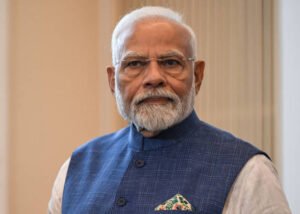American mandate will have a clear impact on India

New Delhi: India is closely watching the U.S. elections from a trade perspective because the outcome could significantly impact bilateral economic relations. Several key factors drive this interest:

- Trade Policies and Tariffs: The U.S. administration’s approach to trade policies, including tariffs on Indian goods, can directly affect India’s exports. For instance, any changes in the U.S.’s stance on tariffs or trade agreements could either benefit or challenge India’s trade position.
- Technology and Digital Economy: The U.S. is a major player in the global technology and digital economy sectors. The U.S. elections might influence policies on data protection, digital taxes, and technology transfers, which are critical to India’s growing digital economy.
- Pharmaceuticals and Healthcare: India is one of the largest exporters of generic medicines to the U.S. Changes in healthcare policies in the U.S. could impact the demand for Indian pharmaceuticals.
- Investment and Market Access: The U.S. elections could affect foreign direct investment (FDI) flows and market access for Indian companies. A pro-business administration might foster greater investment opportunities, while a more protectionist approach could restrict them.
- Strategic Economic Partnerships: India and the U.S. have been working on deepening their strategic economic partnerships, including in areas like defense, energy, and infrastructure. The future of these partnerships could hinge on the U.S. administration’s priorities post-election.
- Supply Chain Dynamics: Given the global shifts in supply chains, particularly in the wake of geopolitical tensions, India is looking to enhance its role as a manufacturing hub. The U.S.’s approach to global trade, especially concerning China, could open new opportunities or pose challenges for India.
As of the latest available data, the trade relationship between India and the United States has been significant and steadily growing. Here’s a snapshot of the Indo-U.S. trade scenario:

- Bilateral Trade Volume: In 2022, the total bilateral trade in goods and services between India and the U.S. exceeded $191 billion. This marked a significant increase from previous years, reflecting the strengthening economic ties between the two nations.
- Exports and Imports:
- India’s Exports to the U.S.: India exported goods and services worth approximately $84 billion to the U.S. These exports include items such as textiles, pharmaceuticals, jewelry, machinery, and information technology services.
- India’s Imports from the U.S.: India imported goods and services worth around $63 billion from the U.S. Key imports include aircraft, machinery, electronic products, and agricultural goods.
- Trade Balance: The trade relationship has typically favored India, with the country maintaining a trade surplus with the U.S. This means that India exports more to the U.S. than it imports from it.
- Strategic Trade Initiatives: Both countries have been working on enhancing trade through various initiatives, including discussions on reducing trade barriers, improving market access, and exploring new areas of cooperation such as technology and defense.
The outcome of the U.S. elections could set the tone for future trade negotiations and influence the broader economic relationship between the two nations.

This robust trade relationship highlights the economic interdependence between India and the U.S., making the outcomes of political and economic policies in both countries highly consequential for their trade dynamics.






